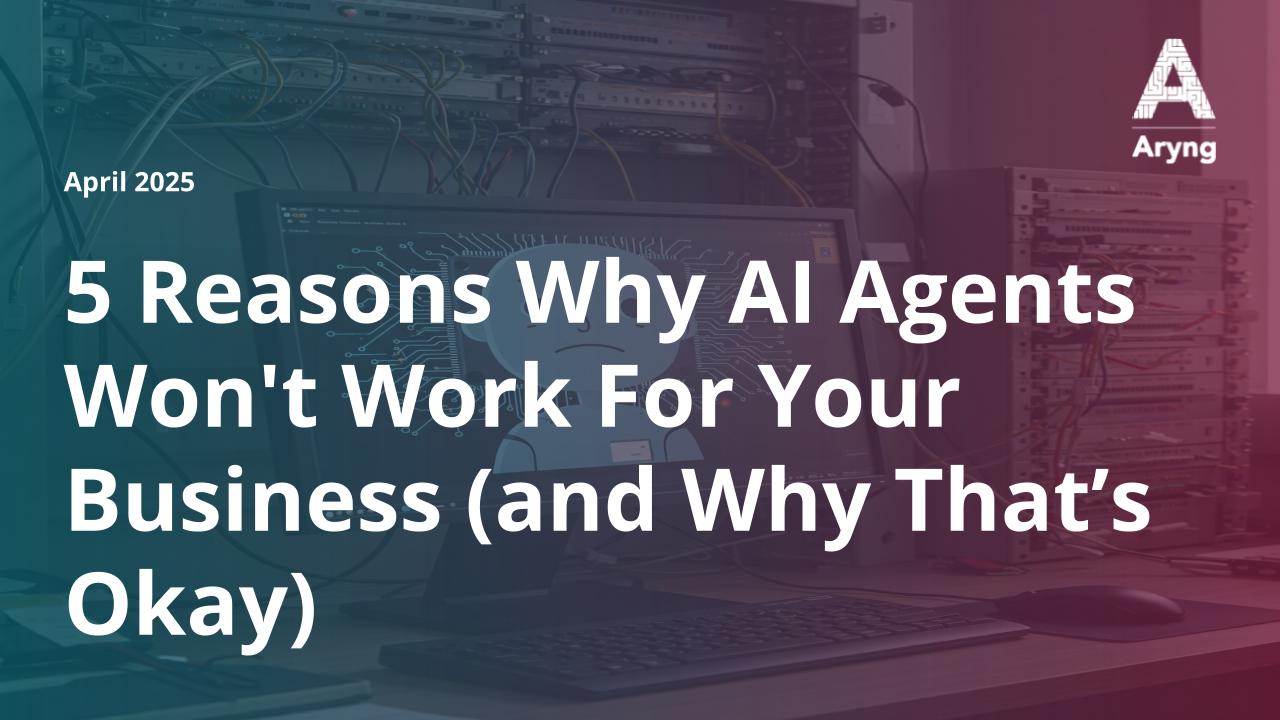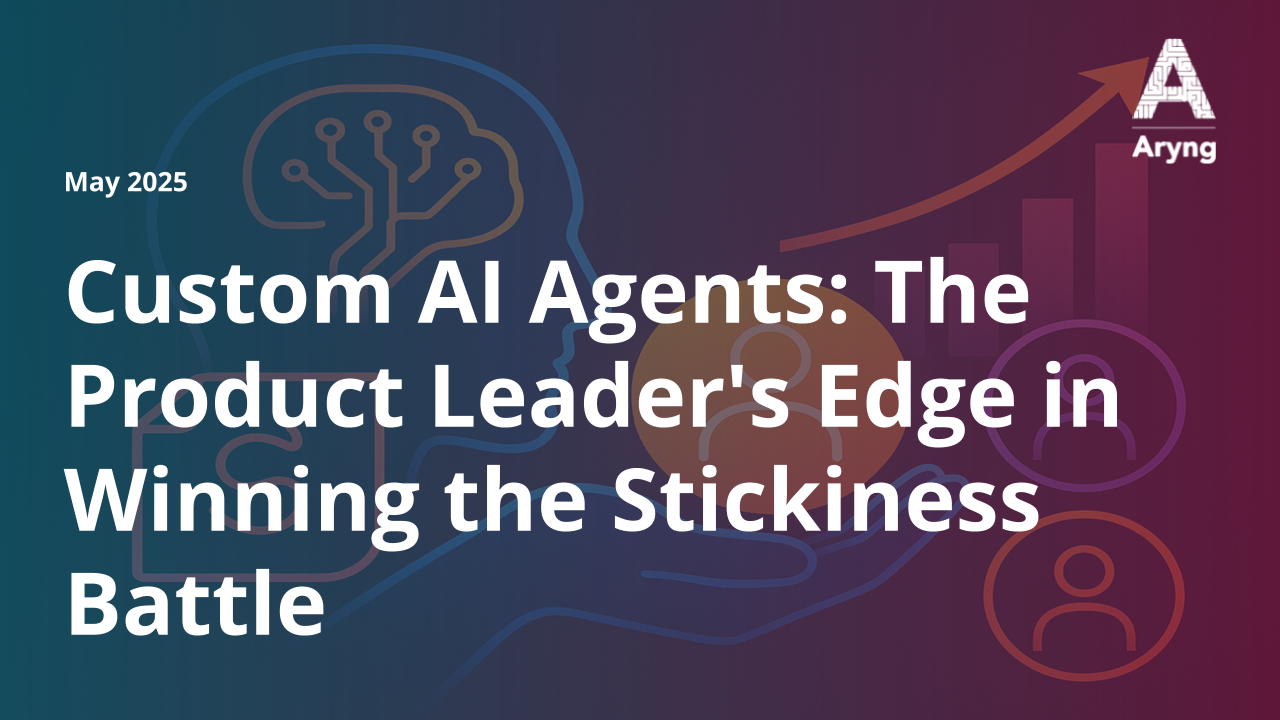Over the last year, generative AI like ChatGPT has revolutionized how leaders make decisions in their day-to-day operations across industries. Because of their unprecedented ability to sift through vast amounts of data and generate instant and easy-to-understand insights, Large Language Models (LLMs) like these enable even non-technical business leaders to partake in more seamless and confident data-driven decision-making.
While several companies have begun creating their own proprietary LLMs, OpenAI’s ChatGPT and Google’s Bard continue to be go-to choices for both technical and non-technical business leaders globally. In this article, we discuss some of the ways that leaders are using LLMs to analyze data and make profitable decisions.
1. LLMs for marketing decisions
Our first application explores the potential of LLMs in marketing. Marketing leaders use LLMs’ language generation capabilities to conceptualize and generate research surveys that can adapt in real time, enabling organizations to receive the most relevant and up-to-date information.
Put it in practice – Try the following prompt in ChatGPT: “Generate a market research survey questionnaire for a new smartphone targeting the 18-35 age group. Include questions about preferred features, price range, and brand preferences.”
The result is a questionnaire that marketers can use as a blueprint for understanding consumer preferences on a deeper level, one that helps them collect more profound data for extracting actionable insights.
Additionally, LLMs excel in analyzing both the content and sentiment of a vast number of customer reviews. Marketing decision-makers are no longer confined to quantitative metrics like 5-point scales to gauge customer happiness. Instead, they can now get a more nuanced understanding of customer behavior and opinions and extract information and recommendations simply by feeding 100s of unstructured reviews or social media posts to the LLM and requesting insights.
Put it in practice – Try the following prompt in ChatGPT: “Analyze customer reviews for our product in the last 6 months. Identify common themes, strengths, and weaknesses. Here are the reviews from the last 6 months: <insert reviews here>”
The LLM may respond with something like this: “Based on the reviews, here are some of the insights:
- The user interface is generally user-friendly, but there could be some improvements in overall aesthetics and visual appeal.
- The app performs adequately, but there might be room for optimization to enhance speed and responsiveness.
- It might be more engaging if there were more customization options to tailor the app to specific preferences.”
Doing this enables business leaders to explore qualitative data-driven improvements instantly. In the above example, they can refine the three insights further by asking the LLM to summarize the pros, cons, and suggestions for improvement. Additionally, they can do this using a significantly larger pool of reviews.
Third, by summarizing key trends within specific industries, LLMs are invaluable tools for marketing leaders seeking to stay ahead of market shifts.
Put it in practice – Try the following prompt in Bard: “Identify emerging trends in the fashion industry for the upcoming season based on online fashion publications and social media discussions.”
By asking the right questions to an up-to-date model like Bard regarding current events and trends, marketing leaders can gain insight into what customers in their industry are interested in and plan successful campaigns accordingly. As of the writing of this article in January 2024, ChatGPT’s training data set only extends up until January 2022. In contrast, Google Bard continuously processes information and may provide more up-to-date answers.
2. LLMs for competitor analysis
We now explore how LLMs can generate compelling value proposition statements and facilitate in-depth competitor content analysis, providing business leaders with a competitive edge.
Equipped with natural language processing, LLMs analyze vast amounts of data to distill key selling points of an organization’s product or service while unveiling insights into rival strategies and content effectiveness.
Put it in practice – Try the following prompt in ChatGPT: “What is <organization’s name>’s advantage over its competitors? What can go in the value prop statement?”
Business leaders can use LLMs to acquire data-backed intelligence that fuels strategic decision-making. By analyzing and interpreting data points provided by the LLMs, they can gain a clearer picture of their competitive standing and can devise strategies to capitalize on identified gaps and opportunities.
Put it in practice – Try the following prompt in Bard: “Analyze the blog and social media content of <competitor’s name>. Identify their content strategy, key topics, and engagement tactics.”
This enables organizations to strategically position themselves by creating content that addresses unexplored areas or provides a unique perspective, differentiating them from their competitors. By using LLMs, leaders can ensure that their ideas are not based on intuition alone but grounded in robust data analysis, allowing for better-informed decisions on content creation and engagement tactics.
3. LLMs for creative ideation
This brings us to the exploration of how LLMs can be an indispensable tool for fostering creativity in organizations. By understanding language nuances and cultural contexts, these models contribute to the ideation process, helping organizations break creative barriers.
To start with, LLMs can be used to propose unique product names that align with the brand’s values and target audience. Whether a brand is aiming for a modern and cutting-edge image or a classic and timeless appeal, an LLM can adapt its suggestions to suit the unique identity and positioning of the product.
Put it in practice – Try the following prompt in ChatGPT: “Generate creative and memorable name options for a new line of organic skincare products by a cutting-edge and modern brand. Target a demographic of women aged 18-30 who prefer natural ingredients and brands with a focus on sustainable sourcing of ingredients.”
By combining linguistic creativity with data-driven insights, business leaders can ensure that the suggested names resonate not only artistically but also analytically, catering to the preferences and perceptions of their demographic.
Beyond naming, LLMs can generate ad campaign ideas, including slogans and messaging. By feeding it information on the brand’s identity, target audience, and marketing objectives, business leaders can ask LLMs to propose innovative concepts that resonate with consumers and effectively communicate the desired message.
In addition to generating ideas for persuasive copy, LLMs can suggest imagery and design elements that complement the brand and enhance the overall aesthetic of the campaign. They can guide creative teams by describing potential scenes, color schemes, or styles that align with the intended message and target audience. Additionally, there are gen-AI tools that can create visuals as well. Some of the most popular ones include DALL-E, Midjourney, and ArtBreeder.
Put it in practice – Try the following prompt in ChatGPT: “Generate ad campaigns for a new smartphone promotion focusing on its cutting-edge camera technology.”
Analyzing textual suggestions against data-backed insights ensures campaigns resonate with the target audience, aligning with preferences. This synthesis empowers business leaders to make informed decisions, maximizing campaign effectiveness and consumer engagement.
4. LLMs for development
By streamlining coding processes, an LLM can be a useful aid for both developers and business leaders.
Take the example of using an LLM for the concatenation of multiple Python files. By understanding the requirements and nuances of the codebase, an LLM can generate a script tailored to the specific needs of the project. This script may involve reading, combining, and writing the content of multiple files while preserving dependencies and import statements. It can also analyze the import relationships within the files and propose solutions to ensure that the concatenated code remains functional. Additionally, by anticipating potential issues, suggesting error-checking routines, and providing validation strategies, an LLM can help developers in creating a robust and reliable concatenation process.
Put it in practice – Try the following prompt in ChatGPT: “Can you generate a Python code to be run on Google Colab with the following functionalities? Accepts multiple PDF files. Deletes the page number I input from each pdf file. Concatenates all files into a single pdf file and allows me to save it on a local system.”
Keep in mind that the code that ChatGPT generates will not be perfect. However, it will still be extremely helpful enough to give developers something to start with.
So how would this benefit business decision-makers? Using Large Language Models (LLMs) to explain code can be immensely beneficial for business leaders, even if they may not be directly involved in coding or software development. Through LLM-generated scripts, they gain insights into the development process, ensuring efficient use of time, manpower, and financial resources. LLMs assist in anticipating potential issues and proposing solutions. This foresight equips business leaders to make timely decisions, preventing bottlenecks and minimizing delays in project timelines.
Most importantly, LLMs can break down complex code into layman’s terms, providing business leaders with a clearer understanding of the technical aspects.
Put it in practice – Try the following prompt in ChatGPT: “Can you explain the following Python code that calculates the factorial of a number?
def factorial(n):
if n == 0 or n == 1:
return 1
else:
return n * factorial(n – 1)
# Example usage
num = int(input(“Enter a number: “))
result = factorial(num)
print(f”The factorial of {num} is: {result}”)”
This comes in useful when they need to communicate with technical teams, stakeholders, or clients, and oversee development project progress, timelines, and impact more effectively. Business leaders can also use LLMs to gain insights into how specific code contributes to achieving business objectives. By understanding intricate technical details in plain language, leaders can make more informed decisions quickly and confidently.
5. LLMs for analysis
Finally, we investigate the seamless generation of SQL code using natural language prompts and the usefulness of LLMs in analysis.
Business leaders can utilize Large Language Models (LLMs) for SQL code generation using natural language to streamline database-related tasks, enhance collaboration between technical and non-technical teams, and accelerate data-driven decision-making. LLMs can assist business leaders in generating SQL queries by translating their natural language requests into executable code. This empowers leaders to extract valuable insights from databases.
Put it in practice – Try the following prompt in ChatGPT: “Consider a database with tables “orders” (columns: order_id, customer_id, order_date) and “customers” (columns: customer_id, customer_name). Create a SQL query to join these tables and retrieve the order ID, customer name, and order date and further refine the results to display only the orders from the last month.”
The above example can help business leaders understand recent customer activity and tailor business strategies accordingly. They could refine the SQL query further to identify patterns in high-value customer orders, assess the most popular products during a specific timeframe, or even analyze the effectiveness of recent marketing campaigns by correlating order data with promotional activities.
Clearly, LLMs can allow business leaders to perform routine data retrieval tasks independently, reducing dependency on technical staff for basic queries. This ensures that technical resources can focus on more complex challenges. By using LLMs for SQL generation, business leaders also contribute to fostering a data-driven culture within the organization, promoting a mindset where decisions are informed by data analytics.
Conclusion
From marketing strategies to development processes, LLMs are enabling a seismic shift in how business leaders approach data-driven decision-making. As we reflect on the diverse applications explored in this article, it is evident that LLMs have transcended their initial capabilities to become catalysts for innovation, collaboration, and informed decision-making.
The synergy between human insight and artificial intelligence holds the promise of a future where leaders navigate the complexities of business with newfound agility and acumen. As LLMs evolve, so too will their impact on shaping the landscape of business decision-making.



